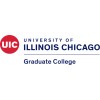
Impact of COVID-19 Vaccines on Cerebrovascular Health
StrokeStroke10 moreSafe and effective severe acute respiratory syndrome coronavirus 2 (SARS-CoV-2) vaccines may reduce the transmission of and achieve population immunity against the COVID-19 pandemic, which accounted for more than 3.75million deaths worldwide. With World Health Organization's (WHO) effort on ensuring equitable access to COVID-19 vaccines, vaccination rate may increase in the near future. On the other hand, vaccination hesitancy has emerged as a major hindrance on the global vaccination campaigns in certain areas due to safety concerns, social factors, and public health policies. For instance, a recent survey conducted in Hong Kong showed a low vaccine acceptance rate of 37%. Long-term safety concerns and post-vaccination events relayed by the social media maybe reasons for vaccination hesitancy. Among which, cerebrovascular accidents (CVA) after vaccination were one of the most frequently reported post-vaccination events. These reports ranged from ischemic strokes in elderly patients with multiple cardiovascular co-morbidities, to hemorrhage strokes in otherwise "young-and-fit" adults. While many of these events were investigated by the COVID-19 immunization expert committee, an important premise to address the apprehension of CVA after vaccination is the provision of evidence-based information of the impact of COVID-19 vaccines on brain health. In this prospective, longitudinal, observational study, we aim to elucidate the relationship between COVID-19 vaccines and cerebrovascular health in healthy citizens in a population-based cohort.

TIPS Plus Transvenous Obliteration for Gastric Varices
CirrhosisLiver5 moreVariceal hemorrhage (VH) from gastric varices (GVs) results in significant morbidity and mortality among patients with liver cirrhosis. In cases of acute bleeding, refractory bleeding, or high risk GVs, the transjugular intrahepatic portosystemic shunt (TIPS) creation and transvenous variceal obliteration procedures have used to treat GVs. While these techniques are effective, each is associated with limitations, including non-trivial rebleeding and hepatic encephalopathy rates for TIPS and aggravation of esophageal varices, development of new or worsening ascites, and formation of difficult to treat ectopic varices for transvenous obliteration. Increasingly, however, TIPS and transvenous obliteration are viewed as complimentary procedures that can be combined to reduce bleeding risk and ameliorate sequelae of portal hypertension. Yet, despite a strong mechanistic basis for their combination, there are few studies investigating the combined effectiveness of TIPS plus transvenous obliteration. Thus, the aim of this single center prospective pilot study is to assess the effectiveness and safety of combined TIPS creation plus transvenous obliteration for the treatment of GVs, with the overall goal of improving the clinical outcomes of patients with VH related to GVs. The work proposed could lead to important advances in the treatment of bleeding complications due to liver cirrhosis.

Effectiveness of Oral Lactulose Versus Lactulose Enema in Hepatic Encephalopathy
Hepatic EncephalopathyChronic Liver DiseasePatients with chronic liver disease due to hepatitis B or C viruses, Non-alcoholic fatty liver disease, autoimmune hepatitis, wilson disease, cryptogenic hepatitis etc are prone to develop complications. Hepatic encephalopathy is one of such complications. It is graded into four types depending on severity of clinical features, which range through altered sleep pattern to coma. The current study aims to compare the effectiveness of lactulose enema with oral lactulose in time to recovery from higher grade of encephalopathy to lower grade of encephalopathy.

Identification of a Pool of miRNA to Improve Early Management of Perinatal Asphyxia and Hypoxic...
Hypoxic-Ischemic EncephalopathyAsphyxia PerinatalHypoxic-ischemic encephalopathy is the most common cause of neurological damage in the neonatal period. It has an incidence of about 1.5-2.5% of livebirths in developed countries. It is associated with a high rate of mortality and morbidity. Major neurological outcomes such as cerebral palsy, mental retardation, learning disabilities, epilepsy occur in approximately 25% of survivors. The diagnostic and prognostic tools currently available for enrollment have limitations and additional reliable biomarkers are needed for all phases of clinical management. Sarnat staging has taken on a role in identifying those infants who may benefit from treatment of hypothermia, resulting in the need for neurological evaluation and staging within 6 hours of life. Therapeutic hypothermia is still the best therapeutic treatment. A new tool in neuroscience research is represented by micro-ribonucleic acid (microRNA) profiling. The presence of microRNAs in blood, urine and saliva and the ability to measure their levels non-invasively has opened new doors in the search for peripheral biomarkers for the diagnosis and prognosis of neurodegenerative diseases and also as possible pharmacological targets. The aim of the present study is to analyze a specific cluster of miRNAs selected from data obtained by macroarray (NGS Pannel) on the entire microRNAome in healthy newborns with normal cord arterial pH value (7.26-7.35) as control cases and in newborns with fetal metabolic acidosis with a pH threshold value lower than 7.12 of the blood gas analysis from cord arterial blood. This latter group will be further stratified into two groups, neonates who will practice therapeutic hypothermia according to current guidelines and a further group who will not practice therapeutic hypothermia. This study will make a further international contribution in evaluating and identifying the potential of microRNAs as diagnostic and prognostic biomarkers in perinatal asphyxia and hypoxic ischemic encephalopathy. Furthermore, the study aims to identify specific microRNA sequences as new possible markers to be used as an additional parameter for the enrollment of therapeutic hypothermia, especially in cases of mild hypoxic-ischemic encephalopathy.

Optic Nerve Sheath Diameter / Eyeball Transverse Diameter Ratio and Prognosis of Sepsis Associated...
Sepsis-associated EncephalopathySepsis is associated with a mortality rate of 20-25%, with significant increase in case of associated comorbidities or shock. SAE is one of the most common forms of encephalopathy encountered in critically ill patients, with increased ICP as a possible underlying mechanism. Many studies revealed that ONSD is a valuable ICP monitoring tool. Also, ONSD/ETD ratio, according to previous studies, seemed to be more reliable than ONSD alone in predicting neurological outcomes of comatosed patients. The present study will assess the correlation between US-ONSD/ETD ratio and the prognosis of SAE in critically ill patients.

Prevention of Epilepsy by Reducing Neonatal Encephalopathy
Neonatal EncephalopathyEpilepsy1 moreThe aim of the study is to examine if a pragmatic, evidenced based and generalisable intrapartum care bundle involving birth companions and empowering mothers will reduce birth injury-related epilepsy at 18 months of age in India. The care bundle will have four key elements (interventions): (1) birth companion providing constant 1:1 care during labour and early perinatal period; (2) fetal surveillance during active labour by a nurse or midwife using a graphic display Doppler; (3) labour management by an electronic partogram with an 'alert' and 'nag' feature based on the current WHO guidelines; (4) brain oriented early newborn care with resuscitation where indicated. The care bundle will be evaluated using a prospective interrupted time series design, recruiting 80,000 women delivering in one of the three participating centres in south India, over two years. Accurate baseline data will be collected during the first year and the optimised care bundle will be introduced during the second year. All full term newborn infants admitted to the neonatal unit with perinatal brain injury during both periods, will have detailed assessments including video electroencephalography, and magnetic resonance imaging, and will be followed up until 18 months of age. Primary outcome is the number of infants with epilepsy (categorised per current ILAE guidelines) at 18 months of age expressed as per 1000 term livebirths. The investigators will use a segmented logistic regression to divide the time series into pre- and post-intervention segments, with the intervention date as the intersection between segments. The difference in the two segments will be quantified using the level (step change) and slope (trend change). The total duration of the study is four years including 24 months of recruitment and 18 months of follow-up.

Study of Pathophysiology of Status Epilepticus and Dysimmune Encephalitis
Status EpilepticusDysimmune EncephalopathyCOLETTE is an interventional study for which blood, cerebrospinal fluid and post-mortem tissues are collected in patients with status epilepticus or epilepsy associated to dysimmune encephalitis as well as in control patients, to better understand the pathophysiology of these severe epileptic disorders.

A Cohort Study on the Prognosis of Neonatal KCNQ2 Gene-associated Epileptic Encephalopathy
SeizuresSeizure Disorder9 moreThe researchers hope to explore the etiological distribution and influencing factors of KCNQ2-related neonatal convulsions or refractory epileptic encephalopathy, and to improve the level of assessment, identification, intervention and shunt of KCNQ2-related convulsions. To formulate countermeasures and measures for prevention, management and health education.

Effective Translation of Endovascular Thrombectomy Trials Into Real-world Practice in the Asia-Pacific...
Ischemic StrokeStroke6 moreAs a major breakthrough of acute stroke treatment over the past decade, endovascular thrombectomy (EVT) drastically improved neurological recovery and survival in patients with large vessel occlusion (LVO) ischemic strokes in major clinical trials. Nevertheless, much remained uncertain about the implementation of scientific evidence of EVT into real-world benefits. For instance, healthcare policies that influence critical time-matrices, endovascular thrombectomy techniques that may enhance success rate or prevent complications, or advanced imaging techniques that allow precise prognosis or expansion of treatment populations, should be evaluated. On the other hand, capturing LVO patients who were not able to undergo EVT may reveal the gap between clinical trials and real-world practice in the Asia-Pacific. In this multicenter prospective collaboration across the Asian-Pacific, the investigators aim to evaluate the determinants of effective EVT in the real-world setting.

Role of Bilirubin Molecular Species in Hepatic Encephalopathy and Acute-on-chronic Liver Failure...
Hepatic EncephalopathyAcute-On-Chronic Liver FailureIt has been identified that impaired liver function, as occurs in patients with liver cirrhosis, prevents proper conjugation of glucuronic acid with bilirubin; as a result, unconjugated bilirubin accumulates in the blood, and conjugated bilirubin is markedly altered to form diglucuronides or monoglucuronides. However, in the development and progress of acute-on-chronic liver failure (ACLF) there is not enough information about these processes and the possible concentration levels that they can take. Also Hepatic encephalopathy (HE) is a reversible complication, but with a high mortality rate in patients with acute or chronic liver failure, as well as a consequence of the formation of portosystemic shunts.
